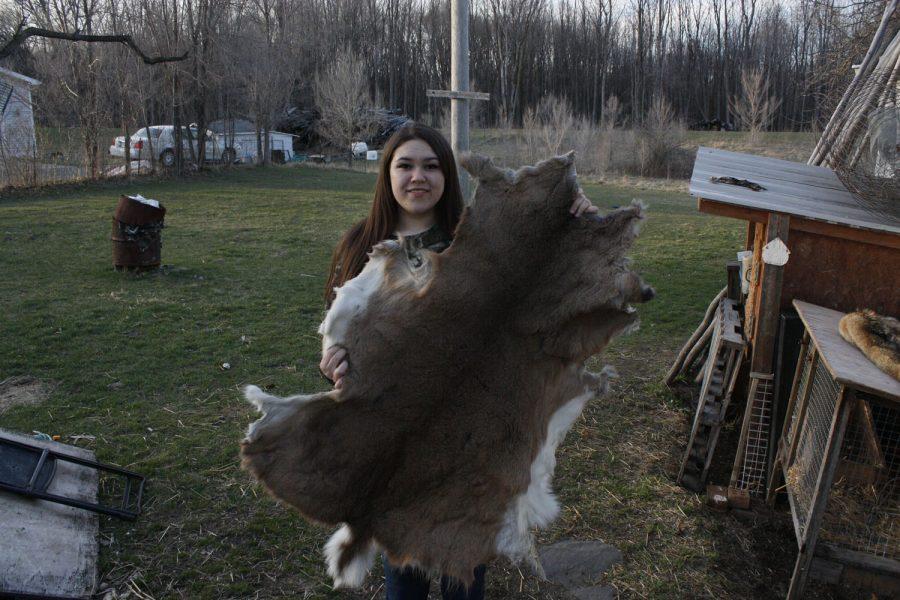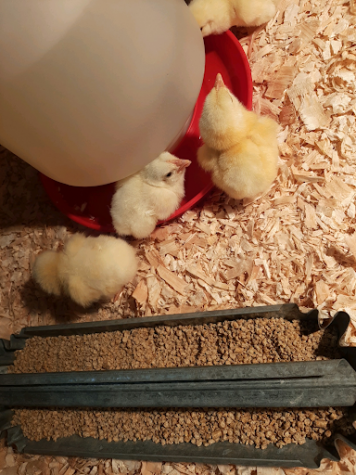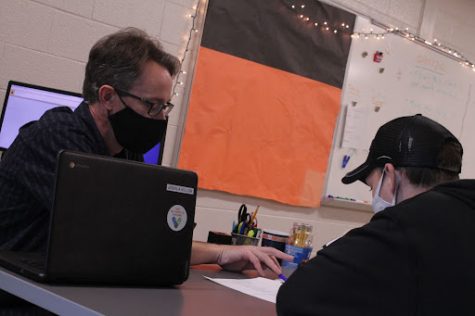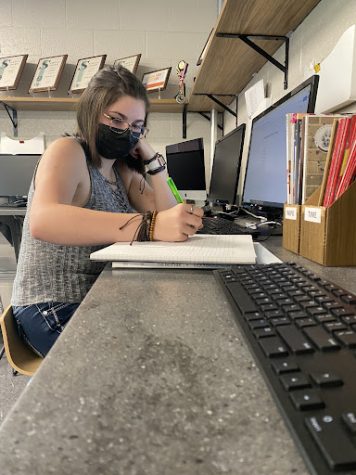Living the fur tanner life
Since working on tanned pelts of all kinds, junior Rita Alonso, stands with a buck hide she recently tanned.
Furs hanging from the side wall along with draw knives, gambreals and fur stretchers. The smell of freshly skinned hides sets the mood. The fur beam is set up and ready to be used. Fur combs already laid out by the sink. Being a good fur tanner means, knowing how to properly handle furs, being able to spot a good quality hide from a distance and having the skills to tan a hide.
This may not be the typical scene for a high schooler, but for me it’s my favorite hangout. Popular trapping and tanning animals in lower Michigan are grey and red fox, muskrat, raccoon, mink, coyote, badger and bobcat. Theses fur bearing animals start to be trapped around the beginning of fall or winter and during a good trapping season the furs can bring in a good amount of cash. The furs are normally sold to fur tanners and taxidermists, but can also be trapped, tanned and sold by the original fur trapper.
At the end of trapping seas
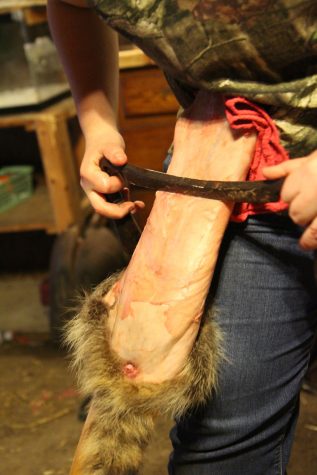
Fleshing a new raccoon pelt with a 10” draw knife, junior Rita Alonso, preps the pelt for tanning.
on, trappers bring their whole season worth of pelts into sell, which makes fur tanners and taxidermist work their tails off.
Common tools used by fur tanners are a draw knife, scraper, tail skinner’s, knife, fur combs, tanning chemicals and fur stretchers. All theses tools are used for certain parts of the tanning process. For example, the scraper is used in the beginning of the process. There can not be any left over fat or meat on the hide, because it contains oils that won’t allow the hide to tan properly. So, fur tanners have to be willing to take the time to properly flesh a hide.
Fur tanning takes a lot of practice in the beginning, and is not easy. Inexperienced fur tanners will have their fair share of the common rawhide, fur slipped or not well tanned pelt. It happens to every tanner. The time and practice will pay off eventually, learning from their mistakes. Mistakes may vary including, poor fleshing, too much salt and not enough tanning chemical. These common mistakes made and that are usually learned from and easy mistakes to correct. After a while the technique and tricks are picked up and the hides are started to be tanned properly.
A fur tanner is a unique job, but it may not be just a job either. Some people tan furs as a job, but others tan hides as a hobby.

I was recommended to Uncaged by my freshman English teacher but had to wait until my sophomore year to join, so I had time to think about it. When scheduling...

I received an invitation to join the newspaper in my ninth grade year around scheduling time. This opportunity led to an experience I never even thought...



